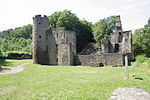Herbede

Since 1975 the former city of Herbede is a part of the city of Witten (North Rhine-Westphalia, Germany). As one of the eight boroughs of Witten, it is now called Witten-Herbede. Before the incorporation with Witten in 1975, Herbede was a city in the administrative district Ennepe-Ruhr-Kreis. Herbede is placed about 5 kilometres southwest of the city of Witten in the southern Ruhr area in the Ruhr valley and has about 13,100 inhabitants today. Herbede has good bus connections and is served by bus lines 320, 374, 375, SB38, SB67 and at the weekend by night bus NE17. There are direct bus connections to central Witten, Witten-Annen, Witten-Rüdinghausen, Witten-Heven, Ruhr University Bochum, Wetter, Gevelsberg, Ennepetal, Hattingen and Wuppertal.
Excerpt from the Wikipedia article Herbede (License: CC BY-SA 3.0, Authors, Images).Herbede
Northwest 2nd Avenue, Pompano Beach
Geographical coordinates (GPS) Address Nearby Places Show on map
Geographical coordinates (GPS)
| Latitude | Longitude |
|---|---|
| N 51.422222222222 ° | E 7.2816666666667 ° |
Address
Northwest 2nd Avenue 358
33060 Pompano Beach
Florida, Vereinigte Staaten von Amerika
Open on Google Maps





